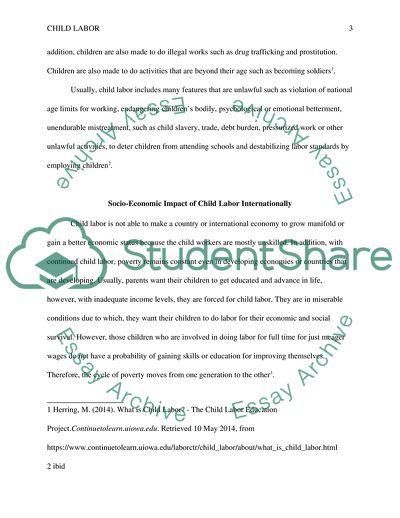Cite this document
(The International Social-economic Impact of Child Labor Essay Example | Topics and Well Written Essays - 1500 words, n.d.)
The International Social-economic Impact of Child Labor Essay Example | Topics and Well Written Essays - 1500 words. https://studentshare.org/social-science/1826407-the-international-social-economic-impact-of-child-labor
The International Social-economic Impact of Child Labor Essay Example | Topics and Well Written Essays - 1500 words. https://studentshare.org/social-science/1826407-the-international-social-economic-impact-of-child-labor
(The International Social-Economic Impact of Child Labor Essay Example | Topics and Well Written Essays - 1500 Words)
The International Social-Economic Impact of Child Labor Essay Example | Topics and Well Written Essays - 1500 Words. https://studentshare.org/social-science/1826407-the-international-social-economic-impact-of-child-labor.
The International Social-Economic Impact of Child Labor Essay Example | Topics and Well Written Essays - 1500 Words. https://studentshare.org/social-science/1826407-the-international-social-economic-impact-of-child-labor.
“The International Social-Economic Impact of Child Labor Essay Example | Topics and Well Written Essays - 1500 Words”. https://studentshare.org/social-science/1826407-the-international-social-economic-impact-of-child-labor.


